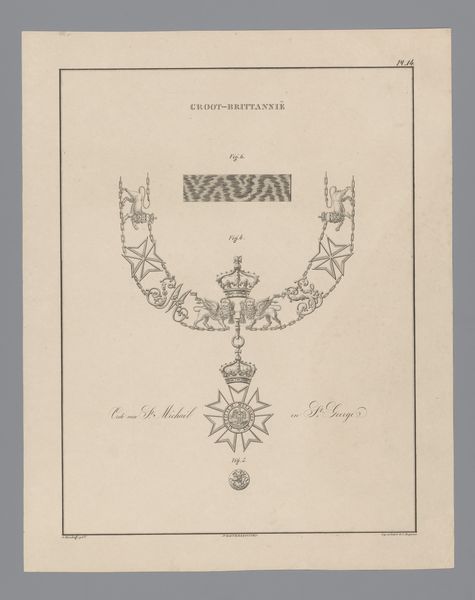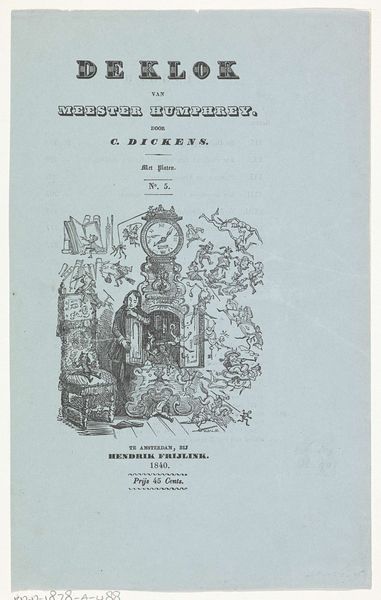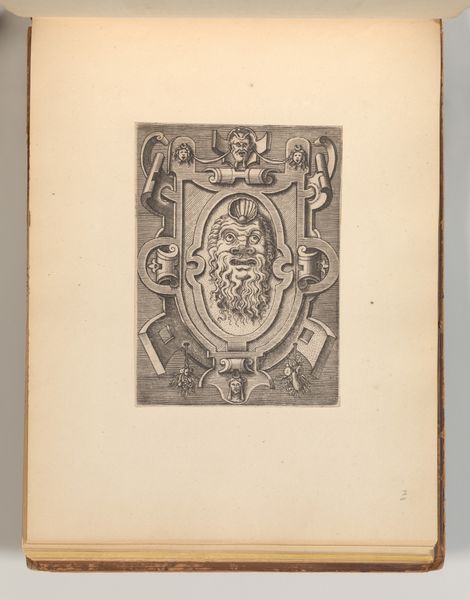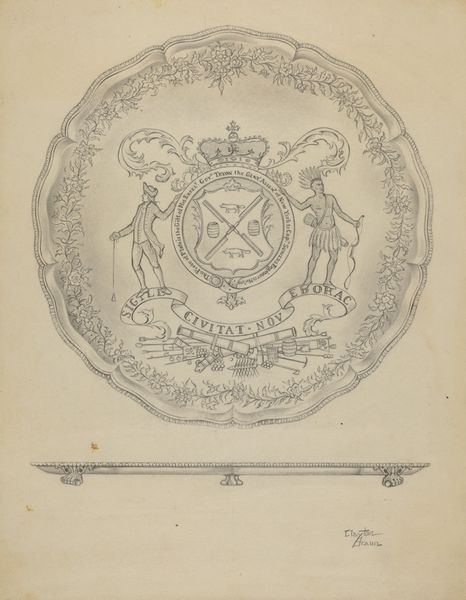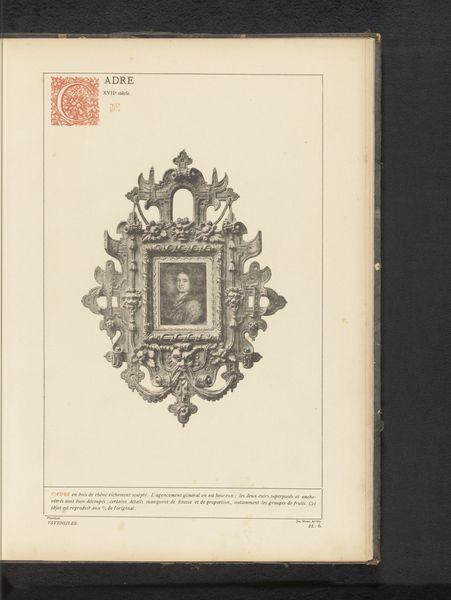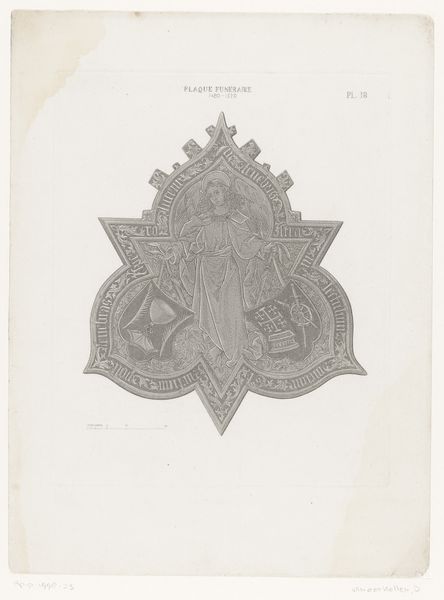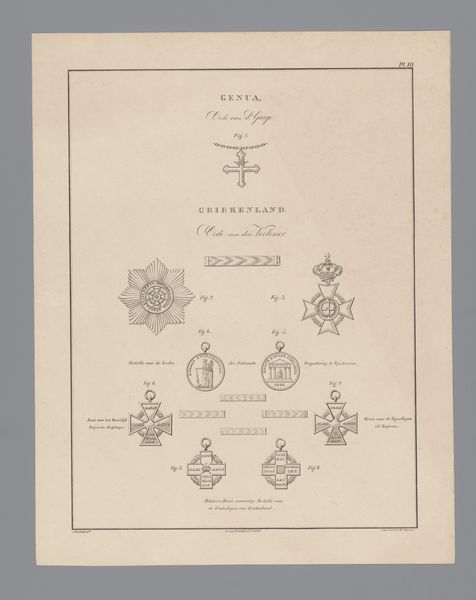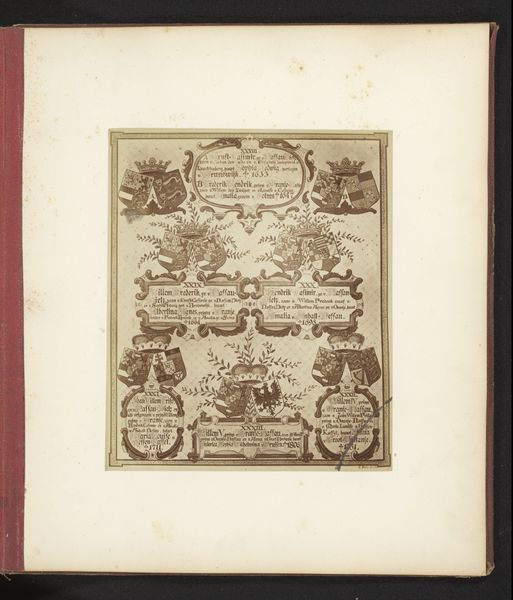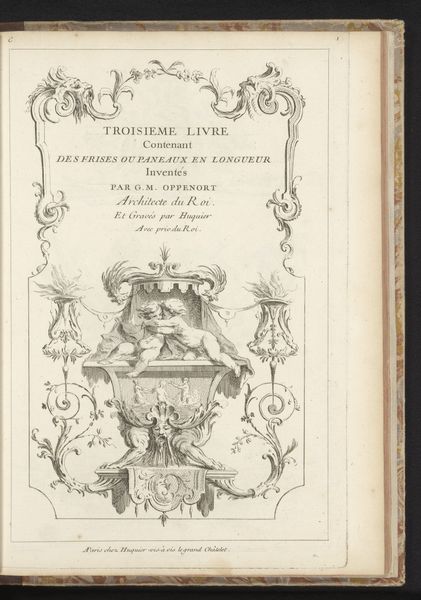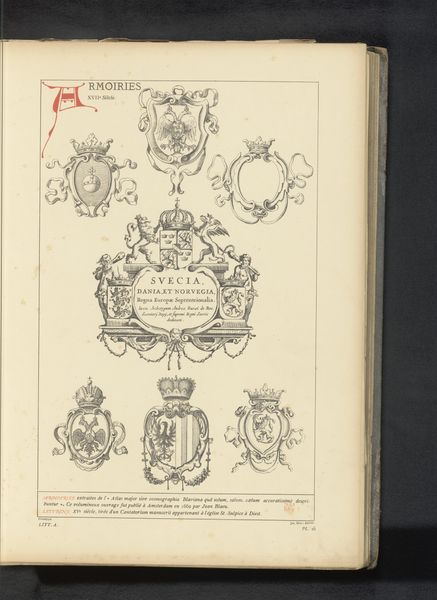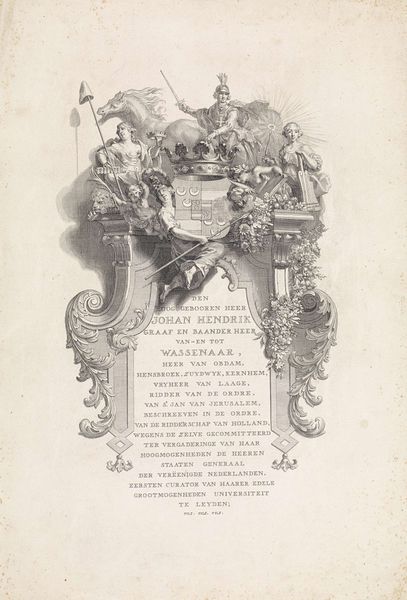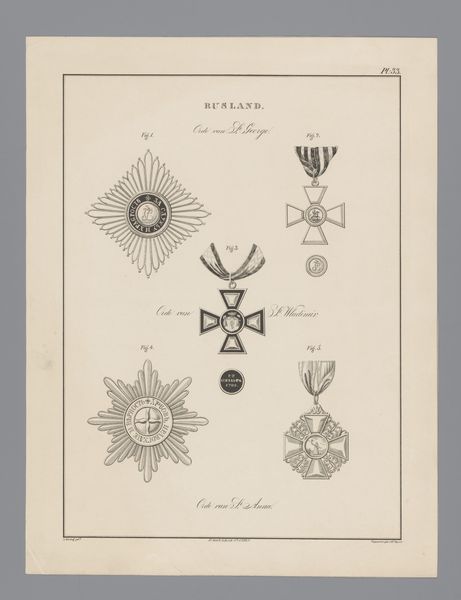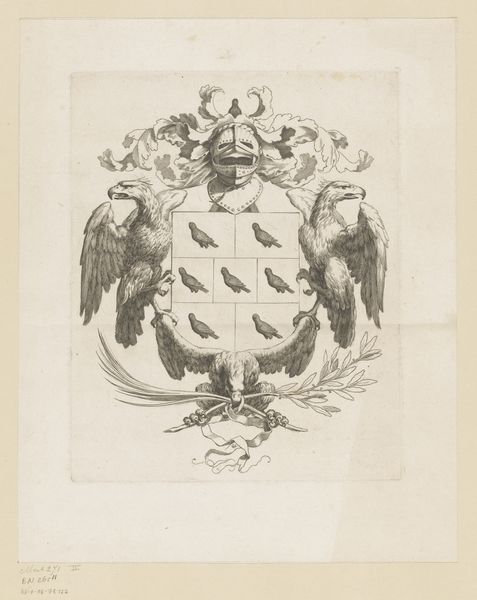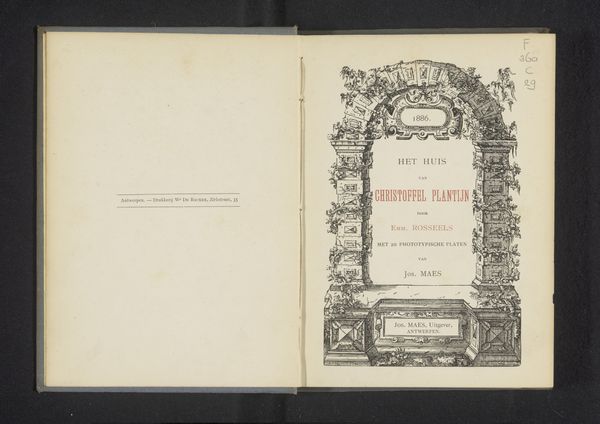![Heraldieke allegorie der afstamming van Koning Willem III en Koningin Sophia uit Keizer Karel den Groote [1874] by Anonymous](/_next/image?url=https%3A%2F%2Fd2w8kbdekdi1gv.cloudfront.net%2FeyJidWNrZXQiOiAiYXJ0ZXJhLWltYWdlcy1idWNrZXQiLCAia2V5IjogImFydHdvcmtzL2UwODI3MGNhLTI5N2YtNDFjZC1iNjYyLWRmYWQ5MmFlMzNiZi9lMDgyNzBjYS0yOTdmLTQxY2QtYjY2Mi1kZmFkOTJhZTMzYmZfZnVsbC5qcGciLCAiZWRpdHMiOiB7InJlc2l6ZSI6IHsid2lkdGgiOiAxOTIwLCAiaGVpZ2h0IjogMTkyMCwgImZpdCI6ICJpbnNpZGUifX19&w=3840&q=75)
Heraldieke allegorie der afstamming van Koning Willem III en Koningin Sophia uit Keizer Karel den Groote [1874] 1874
0:00
0:00
anonymous
Rijksmuseum
ink, engraving
#
old engraving style
#
ink
#
ink drawing experimentation
#
history-painting
#
academic-art
#
engraving
Dimensions: height 282 mm, width 219 mm
Copyright: Rijks Museum: Open Domain
This heraldic allegory, made in 1874 by an anonymous artist, is a dense tapestry of symbols meticulously arranged to convey the lineage of King Willem III and Queen Sophia from Emperor Charlemagne. The composition centers on a double-headed eagle, its wings outstretched, bearing a complex shield divided into numerous smaller heraldic fields. Above, a crown sits atop the eagle, adding to the sense of authority and historical depth. The use of line and form in the drawing creates a textured surface, which is further articulated with stippling. The artist employs a visual language deeply embedded in the codes of heraldry, a semiotic system designed to communicate power, heritage, and legitimacy. The image is not merely decorative; it's a political statement, asserting a continuity of rule. The sheer complexity of the heraldic display, with its accumulation of signs, speaks to the weight of history and the desire to ground the monarchy in a distant, idealized past. Note how the artist uses the form and structure of heraldry to legitimize royal power.
Comments
No comments
Be the first to comment and join the conversation on the ultimate creative platform.
